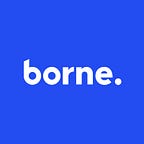One Door Closes, Another Opens: The Heavy-Weight of Fitness Tech
With gyms in the UK slowly opening their doors this week, the future of fitness in a possible post-COVID UK means that gyms are looking towards digital solutions to bring clients to them from the comfort of their own homes and improving the overall experience of brick ‘n mortar gyms in the future. The market for Health & Fitness apps is booming right now, as users look to their mobile screens to find new ways to stay fit and maintain their mental health during the lockdown period.
Health & Fitness was up 40% on Google Play and 30% on iOS, quarter-over-quarter. Education was up 35% on Google Play and 40% on iOS. And Business was up was up 30% on Google Play and 35% on iOS. From brands like Peloton and Mirror, which offer gym-quality workouts at home, to giants like Nike and Adidas, who have helped to popularise ‘fit-tech’ through partnerships with Apple and Fitbit — many companies have found success. According to reports, the digital fitness industry generated $3.6 billion in revenue for the US alone in 2019.
Health, Wellness and Fitness App Trends
Downloads of health and fitness apps rocketed 65% in the UK during the week of 22nd March with consumer spend topping $2.9 million, according to App Annie. With time spent by Brits in health and fitness apps up 10% over the first week of the coronavirus lockdown.
Health, fitness and wellness start-ups are closely analysing the trends in this booming market, as technology continues to change traditional public and private health sectors and fitness industries such as brick-‘n-mortar gyms.
Far from just being useful for crunching revenue numbers, technology can assist in improving the performance of brick ‘n mortar gyms by tracking member’s activity and outcomes, ensuring the client received the best possible fitness experience. Building a fitness and tech ecosystem within the gym and have a space dedicated to evolving and learning from the information collected can employ tech to reach beyond fitness campaigns, member check-ins, and simple fitness content. Integrating tech to collect data and information about the members and their fitness habits can create a more personalised experience. This information provides the ability to create personalised programming by predicting member behaviour. Incorporating better programmes can also produce increasing value for members.
“Technology can be integrated beyond the walls of gyms by offering wearables and video content to their members.”
Health and fitness apps are now leading the way more generally in app development when it comes to tech innovation in artificial intelligence (AI), data security, user experience (UX) design, virtual reality (VR) and augmented reality (AR), wearable tech and biometric monitoring, thanks to smart watches enabling tracking information like weight, activity, sleep, heart rate and more. The wearables market is building momentum. Statista estimates that the number of wearable devices worldwide is to double from 2019 to 2022. Especially popular are the smartwatches. Shipments are thought to increase by more than 50% from 53 million units in 2018 to 115 million units in 2022. This is more than PCs or even smartphones.
Ramping up Digital Opportunities
Amid the coronavirus outbreak, Peloton and other digital fitness brands have found themselves in a more fortunate position than their brick-and-mortar counterparts. This is because they are already equipped to offer remote fitness to customers, and have naturally seen an uptick in demand because of people being prevented from working out in-person.
Shares of Peloton increased by 9.2%, while downloads of its app were reportedly up five times in March compared to February. Since, Peloton has suspended deliveries of new treadmills, due to the size of the item making ‘no-contact’ deliveries difficult. However, it is still capitalising on demand of its home-workout app (which users can use without equipment), and has extended its free trial to 90-days.
Aaptiv is another digital fitness platform that has seen an increase in demand. CEO and founder of Aaptive, Ethan Agarwal, says that “engagement for non-equipment programs has increased by 50% whereas usually the engagement is the same for both equipment and non-equipment based workouts”.
Reaching New Audiences
It’s a time of change for the brick-and-mortar fitness industry. The silver lining is that it can be possible for gyms to offer services to customers at home through digital channels, and many are now doing their best to create opportunities for online customers where possible.
Fortunately, social media makes video streaming an easy option, with Joe Wicks being an example that many are trying to follow. London fitness company Frame recently asked its audience on Instagram what exercise classes they’d want to be streamed, ahead of the gym’s launch of Frame Online. US gym chain, Planet Fitness, is doing a similar thing with free workouts for a period of two weeks, streamed on its Facebook and YouTube channels.
Of course, gyms will continue to be used after lockdown, but with new setups thanks to social distancing measures. The fitness app industry has gained a lot of traction over the last months and this demonstrates a lot of unearthed potential. Fitness apps are here to stay, and we’re only beginning to really realise their full power. More and more people will use them both outside and inside gyms, because an effective app will aim to provide anyone with a training solution that fits their needs, whether that means working out at home, outdoors, or in a gym.
